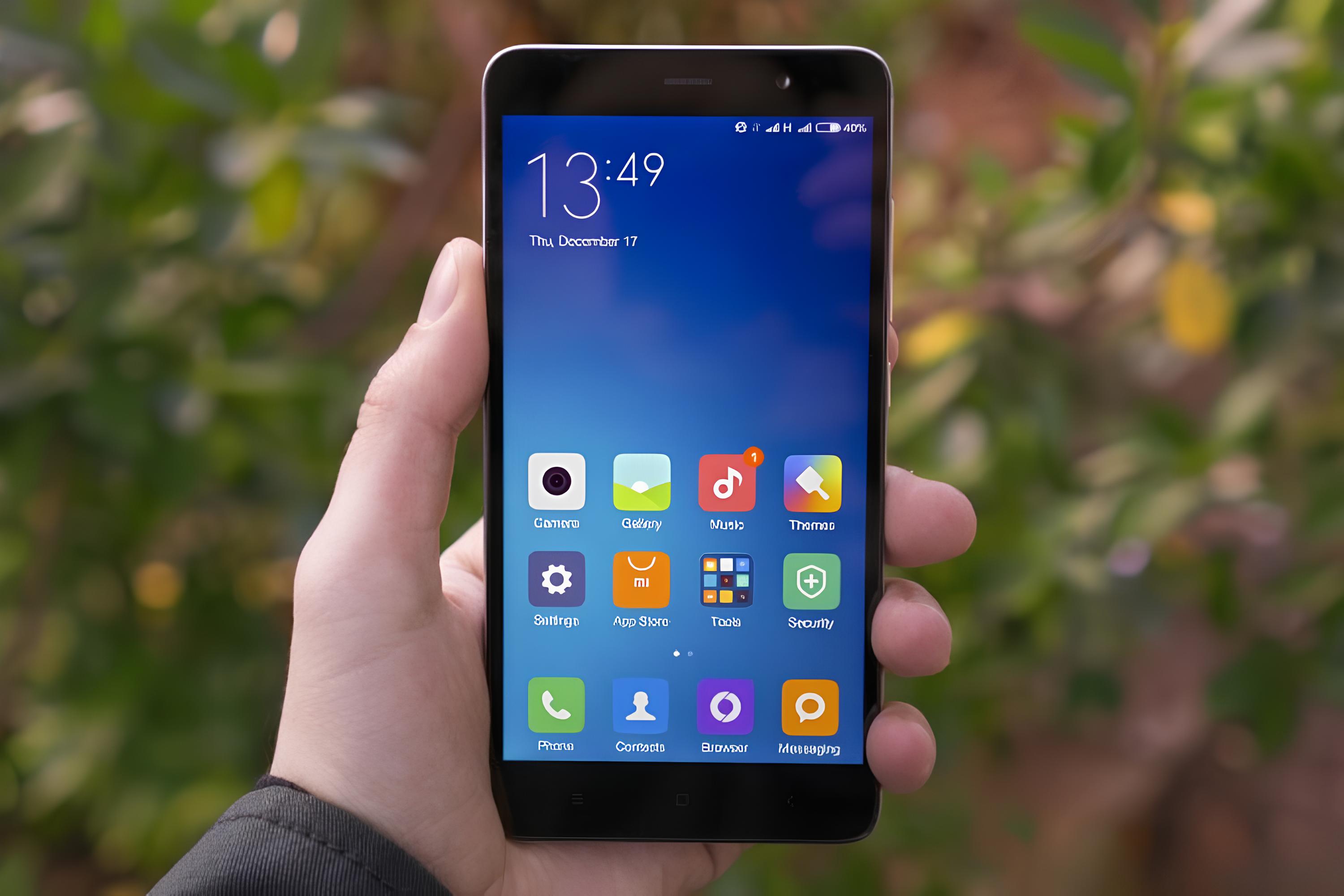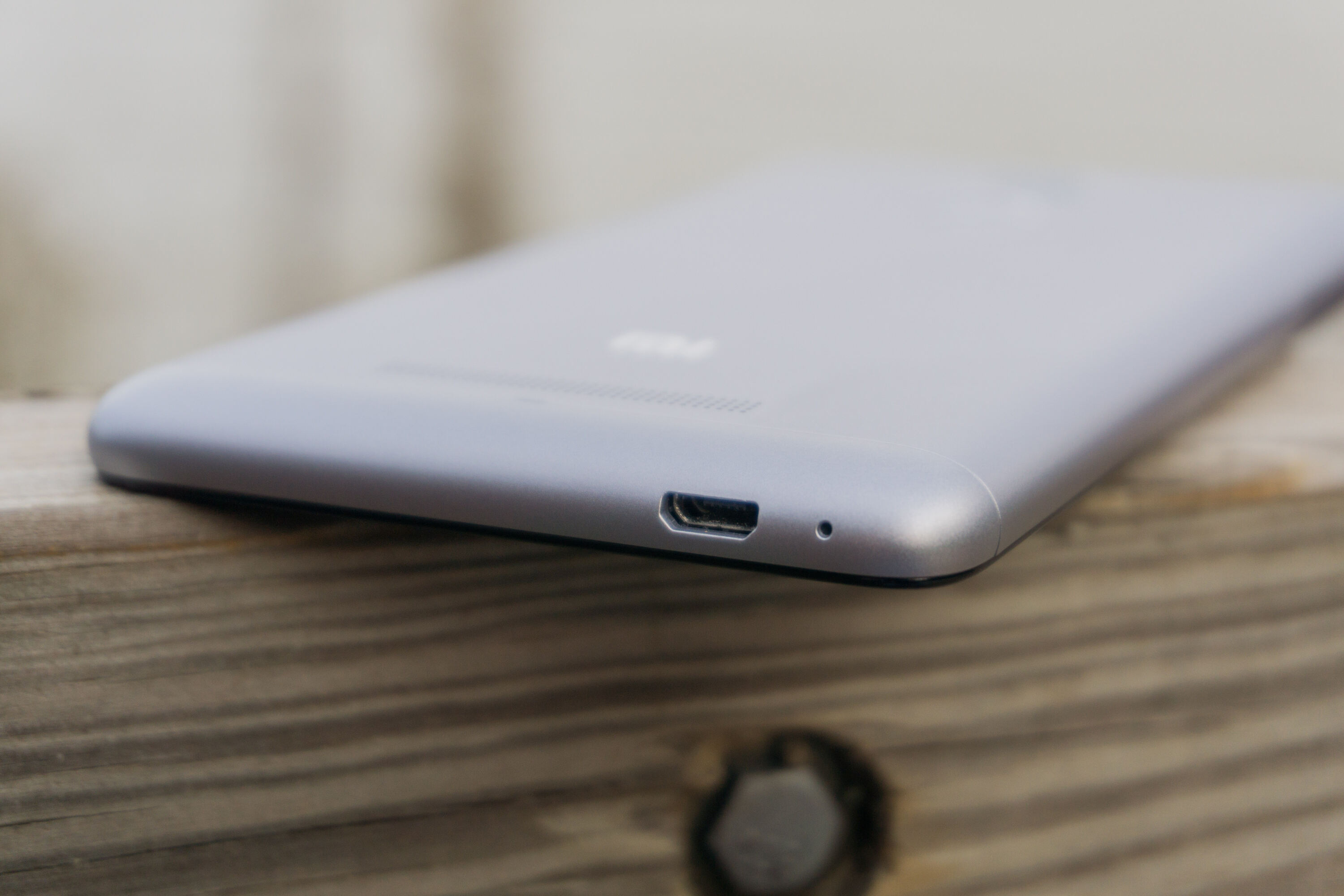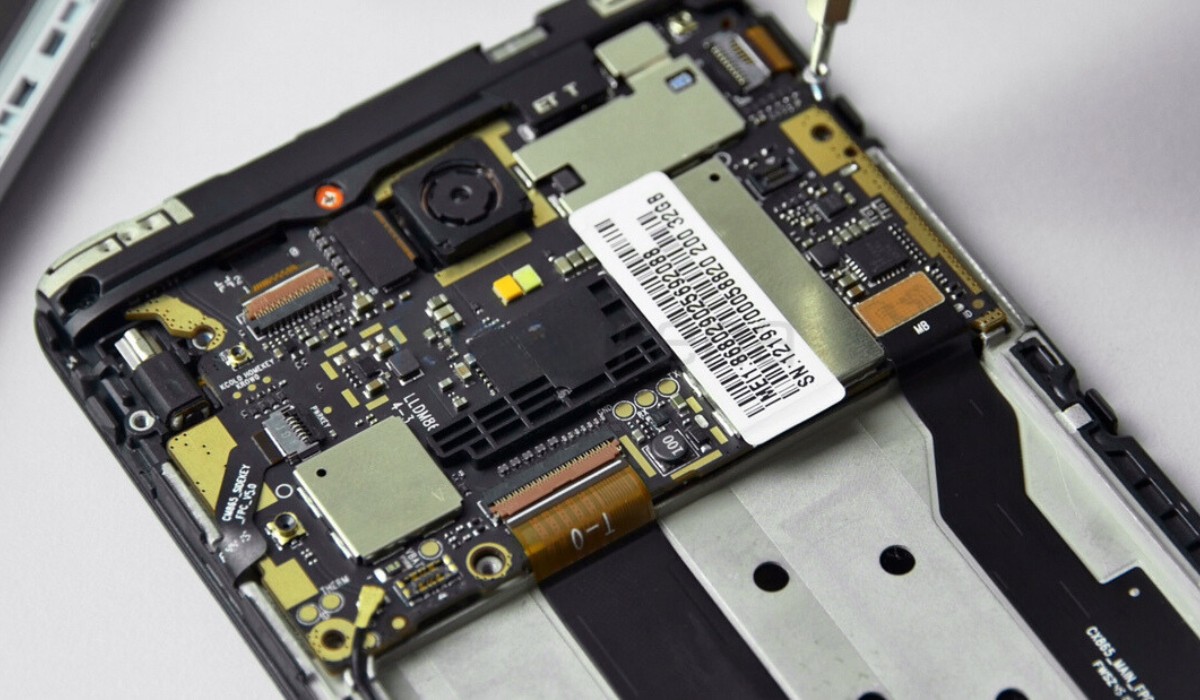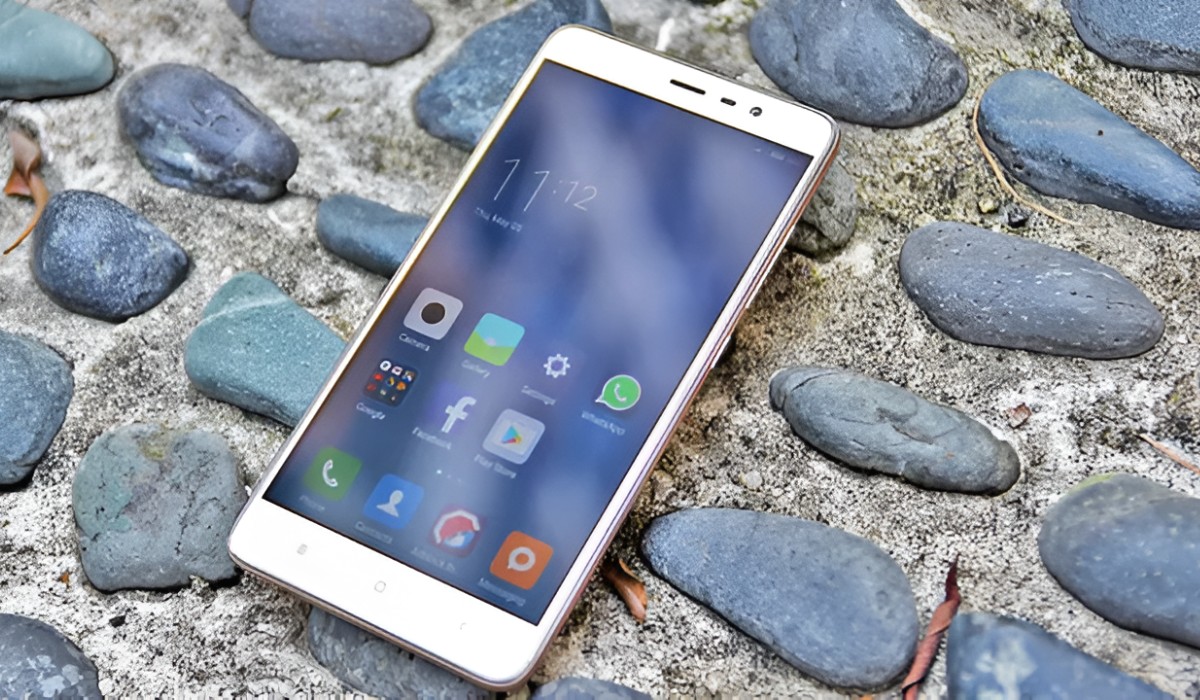Introduction
The Redmi Note 3 is a popular and versatile mobile device that offers a wide range of features and functionalities. One of the key aspects of this device is its Recovery Mode, which serves as a powerful tool for troubleshooting and performing various system-related tasks. In this article, we will delve into the intricacies of accessing Recovery Mode on the Redmi Note 3, providing a comprehensive step-by-step guide to help users navigate this essential feature with ease.
Recovery Mode is a specialized boot mode that is built into the firmware of the Redmi Note 3. It is designed to provide users with a set of powerful tools and options for managing and maintaining the device's software and hardware. Whether you need to troubleshoot a software issue, perform a factory reset, or install system updates, Recovery Mode is the go-to destination for carrying out these essential tasks.
Understanding how to access Recovery Mode on the Redmi Note 3 is crucial for any user looking to take full advantage of the device's capabilities. By following the steps outlined in this guide, users will gain the confidence and knowledge needed to harness the potential of Recovery Mode, enabling them to address software-related issues and optimize the performance of their Redmi Note 3.
In the following sections, we will explore the significance of Recovery Mode, the specific reasons for accessing it on the Redmi Note 3, and a detailed breakdown of the step-by-step process for entering and utilizing this essential feature. Whether you are a seasoned Redmi Note 3 user or a newcomer to the device, this guide will equip you with the essential know-how to leverage Recovery Mode effectively.
What is Recovery Mode?
Recovery Mode is a crucial component embedded within the firmware of the Redmi Note 3, serving as a specialized boot mode that provides users with a plethora of powerful tools and options for managing and maintaining the device's software and hardware. This mode is distinct from the standard operating mode of the device and is primarily utilized for troubleshooting, system maintenance, and performing crucial system-related tasks.
When the Redmi Note 3 is booted into Recovery Mode, it grants users access to a range of essential features and functionalities that are not available during regular operation. These include the ability to perform a factory reset, apply software updates, clear the device's cache partition, and even install custom firmware. Recovery Mode acts as a safeguard, allowing users to address software-related issues and restore the device to a stable state in the event of system malfunctions or errors.
Furthermore, Recovery Mode serves as a gateway for advanced users and developers to carry out tasks such as flashing custom ROMs, creating and restoring device backups, and executing low-level system maintenance operations. This mode provides a level of access and control that is not typically available in the standard user interface, making it an indispensable tool for those seeking to customize and optimize their Redmi Note 3 experience.
In essence, Recovery Mode is a fundamental aspect of the Redmi Note 3's software architecture, offering a secure and controlled environment for users to troubleshoot, maintain, and enhance the device's software and firmware. By understanding the capabilities and functions of Recovery Mode, users can harness its potential to address software-related issues, optimize system performance, and explore advanced customization options, thereby maximizing the utility and longevity of their Redmi Note 3.
Why Access Recovery Mode on Redmi Note 3?
Accessing Recovery Mode on the Redmi Note 3 is a crucial aspect of effectively managing and maintaining the device's software and hardware. There are several compelling reasons why users may need to enter Recovery Mode, each serving as a vital tool for addressing specific scenarios and optimizing the performance of the device.
1. Troubleshooting Software Issues
Recovery Mode provides a secure environment for diagnosing and resolving software-related problems that may arise on the Redmi Note 3. Whether the device is experiencing frequent app crashes, system freezes, or unresponsive behavior, entering Recovery Mode allows users to perform a range of troubleshooting actions, including clearing the device's cache partition, applying software updates, and performing a factory reset. These actions can help rectify software glitches and restore the device to a stable and functional state.
2. Performing a Factory Reset
In situations where the Redmi Note 3 encounters persistent software issues or becomes unresponsive, performing a factory reset via Recovery Mode can be a viable solution. This process restores the device to its original factory settings, erasing all user data and installed apps. By accessing Recovery Mode, users can initiate a factory reset, effectively wiping the device's internal storage and potentially resolving persistent software issues.
3. Installing System Updates and Custom Firmware
Recovery Mode serves as a gateway for applying official system updates released by the device manufacturer. By entering Recovery Mode, users can initiate the installation of system updates, ensuring that the device's software remains up-to-date with the latest enhancements and security patches. Additionally, advanced users and enthusiasts can utilize Recovery Mode to install custom firmware and modifications, thereby unlocking the potential for enhanced customization and feature expansion on the Redmi Note 3.
4. Clearing the Device's Cache Partition
Over time, the cache partition of the Redmi Note 3 may accumulate temporary files and data that can impact system performance. Accessing Recovery Mode allows users to clear the device's cache partition, effectively removing redundant data and temporary files that may be contributing to sluggish performance or app-related issues. This action can help optimize the device's performance and resolve certain software-related issues without the need for a full factory reset.
5. Creating and Restoring Device Backups
Recovery Mode facilitates the creation and restoration of device backups, enabling users to safeguard their data and settings or restore them in the event of a critical software issue. By entering Recovery Mode, users can initiate the backup and restoration processes, providing an added layer of security and peace of mind when managing their Redmi Note 3.
In essence, accessing Recovery Mode on the Redmi Note 3 is essential for addressing software-related issues, performing crucial system maintenance tasks, and unlocking advanced customization options. By understanding the significance of Recovery Mode and the diverse range of actions it enables, users can effectively manage and optimize the performance of their Redmi Note 3, ensuring a seamless and reliable user experience.
Step 1: Power Off the Redmi Note 3
Before initiating the process of accessing Recovery Mode on the Redmi Note 3, the first step is to power off the device. This fundamental step ensures that the device is in a state ready to enter Recovery Mode, allowing users to proceed with the subsequent actions seamlessly.
To power off the Redmi Note 3, users can follow these straightforward steps:
-
Hold down the power button: Located on the right-hand side or the top of the device, depending on the model, the power button is easily accessible. Press and hold down the power button until the power-off menu appears on the screen.
-
Select "Power Off": Once the power-off menu is displayed, users can tap on the "Power Off" option to initiate the shutdown process. This action prompts the device to begin powering down, ensuring that it enters a fully powered-off state.
-
Wait for the device to turn off: After selecting the "Power Off" option, users should wait for the Redmi Note 3 to complete the shutdown process. The device's screen will turn off, indicating that it has successfully powered down and is ready to proceed to the next step of entering Recovery Mode.
By following these simple steps to power off the Redmi Note 3, users can ensure that the device is in the appropriate state to begin the process of accessing Recovery Mode. This foundational step sets the stage for the subsequent actions involved in entering Recovery Mode, allowing users to proceed with confidence and clarity as they navigate the essential features and functionalities offered by this critical mode.
Step 2: Press and Hold the Volume Up and Power Buttons
After ensuring that the Redmi Note 3 is powered off, the next step in accessing Recovery Mode involves pressing and holding the Volume Up and Power buttons simultaneously. This action serves as a pivotal maneuver that initiates the device's entry into Recovery Mode, unlocking a realm of powerful tools and options for managing and maintaining the device's software and hardware.
To execute this step effectively, users can follow the following detailed instructions:
-
Locate the Volume Up and Power buttons: Positioned on the side or top of the Redmi Note 3, the Volume Up and Power buttons are easily accessible. Users should familiarize themselves with the location of these buttons to prepare for the simultaneous pressing and holding action.
-
Press and hold the Volume Up and Power buttons simultaneously: With the device powered off, users should press and hold down the Volume Up and Power buttons simultaneously. This action requires a steady and deliberate press to ensure that both buttons are engaged effectively.
-
Maintain the buttons for a few seconds: After pressing and holding the Volume Up and Power buttons, users should maintain this action for a few seconds, ensuring that the device registers the input and begins the process of entering Recovery Mode.
-
Observe the device's response: As the Volume Up and Power buttons are held down, users should observe the device's response. Typically, the device will display the Mi logo on the screen, indicating that it has recognized the input and is progressing towards entering Recovery Mode.
By following these detailed steps to press and hold the Volume Up and Power buttons, users can effectively initiate the process of entering Recovery Mode on the Redmi Note 3. This pivotal action sets the stage for the subsequent steps involved in navigating the essential features and functionalities offered by Recovery Mode, empowering users to address software-related issues, perform crucial system maintenance tasks, and unlock advanced customization options with confidence and precision.
Step 3: Release the Buttons When the Mi Logo Appears
As the Redmi Note 3 progresses towards entering Recovery Mode, users must be attentive to the appearance of the Mi logo on the device's screen. This pivotal moment signifies that the device has recognized the input from pressing and holding the Volume Up and Power buttons and is transitioning into Recovery Mode. Upon sighting the Mi logo, users must promptly release the Volume Up and Power buttons to allow the device to proceed into Recovery Mode seamlessly.
Releasing the buttons when the Mi logo appears is a critical step in the process of accessing Recovery Mode on the Redmi Note 3. It requires users to exercise attentiveness and precision, ensuring that the device's transition into Recovery Mode occurs without interruption or interference. By releasing the buttons at the appropriate juncture, users facilitate the device's seamless entry into Recovery Mode, thereby gaining access to a suite of powerful tools and options for managing and maintaining the device's software and hardware.
The appearance of the Mi logo serves as a visual cue that the device has acknowledged the user input and is progressing towards the activation of Recovery Mode. As the logo becomes visible on the screen, users should promptly release the Volume Up and Power buttons to allow the device to proceed uninterrupted. This action enables the Redmi Note 3 to seamlessly transition into Recovery Mode, granting users the ability to perform a range of essential tasks and actions within this specialized boot mode.
By releasing the buttons when the Mi logo appears, users ensure that the device's entry into Recovery Mode occurs smoothly and efficiently. This pivotal step sets the stage for the subsequent actions involved in navigating the essential features and functionalities offered by Recovery Mode, empowering users to troubleshoot software issues, perform crucial system maintenance tasks, and explore advanced customization options with confidence and clarity.
In essence, the timely release of the Volume Up and Power buttons when the Mi logo appears is a fundamental aspect of the process of accessing Recovery Mode on the Redmi Note 3. By adhering to this step with attentiveness and precision, users pave the way for harnessing the full potential of Recovery Mode, enabling them to address software-related issues and optimize the performance of their Redmi Note 3 with ease and efficacy.
Step 4: Navigate the Recovery Mode Menu
Upon successful entry into Recovery Mode on the Redmi Note 3, users are presented with a specialized menu that provides access to a range of powerful tools and options for managing and maintaining the device's software and hardware. Navigating the Recovery Mode menu is a pivotal step that empowers users to perform crucial system-related tasks and actions, ensuring the effective troubleshooting and optimization of the device.
The Recovery Mode menu typically consists of several options and functionalities, each serving a specific purpose in addressing software-related issues and maintaining the device's performance. Users can navigate the Recovery Mode menu using the Volume Up and Volume Down buttons to highlight and select the desired options, with the Power button serving as the means to confirm the selected action.
Common options available in the Recovery Mode menu include:
-
Reboot System Now: This option allows users to exit Recovery Mode and reboot the device, returning it to its standard operating mode.
-
Apply Update from ADB: Users can utilize this option to apply software updates to the device using the Android Debug Bridge (ADB) tool, facilitating the installation of official system updates or custom firmware.
-
Wipe Data/Factory Reset: Selecting this option initiates a factory reset of the device, erasing all user data and installed apps to restore the device to its original factory settings.
-
Wipe Cache Partition: This option enables users to clear the device's cache partition, removing temporary files and data that may be impacting system performance.
-
Backup and Restore: Users can create and restore device backups using this option, safeguarding their data and settings or restoring them in the event of a critical software issue.
-
Mount /system: Advanced users and developers can utilize this option to mount the device's system partition, enabling low-level system modifications and maintenance operations.
-
Power Off: This option allows users to power off the device from within Recovery Mode, providing a convenient means to shut down the device when necessary.
By navigating the Recovery Mode menu and selecting the appropriate options, users can perform a range of essential tasks and actions to address software-related issues, optimize system performance, and explore advanced customization options. The intuitive interface of the Recovery Mode menu empowers users to interact with the device's firmware in a controlled and secure environment, ensuring that they can effectively manage and maintain the software and hardware of the Redmi Note 3 with confidence and precision.
Step 5: Perform Actions in Recovery Mode
Once the user has successfully navigated to the Recovery Mode menu on the Redmi Note 3, they gain access to a myriad of powerful actions and functionalities that are instrumental in managing and maintaining the device's software and hardware. This pivotal step empowers users to perform a range of essential tasks, ensuring the effective troubleshooting and optimization of the device.
Performing a Factory Reset
One of the primary actions that users can undertake in Recovery Mode is performing a factory reset. This process restores the device to its original factory settings, erasing all user data and installed apps. By selecting the "Wipe Data/Factory Reset" option from the Recovery Mode menu, users can initiate this crucial action, potentially resolving persistent software issues and restoring the device to a stable state.
Applying System Updates
Recovery Mode provides users with the ability to apply official system updates released by the device manufacturer. By selecting the "Apply Update from ADB" option, users can leverage this feature to install software updates, ensuring that the device's software remains up-to-date with the latest enhancements and security patches. Additionally, advanced users and enthusiasts can utilize this functionality to install custom firmware and modifications, unlocking the potential for enhanced customization and feature expansion on the Redmi Note 3.
Clearing the Device's Cache Partition
The option to "Wipe Cache Partition" within the Recovery Mode menu enables users to clear the device's cache partition, effectively removing redundant data and temporary files that may be contributing to sluggish performance or app-related issues. This action can help optimize the device's performance and resolve certain software-related issues without the need for a full factory reset, providing a valuable tool for maintaining the device's efficiency.
Creating and Restoring Device Backups
Recovery Mode facilitates the creation and restoration of device backups, allowing users to safeguard their data and settings or restore them in the event of a critical software issue. By selecting the "Backup and Restore" option, users can initiate the backup and restoration processes, providing an added layer of security and peace of mind when managing their Redmi Note 3.
In essence, Recovery Mode on the Redmi Note 3 offers a comprehensive suite of actions and functionalities that empower users to address software-related issues, perform crucial system maintenance tasks, and explore advanced customization options. By leveraging these capabilities, users can effectively manage and optimize the performance of their Redmi Note 3, ensuring a seamless and reliable user experience.
Conclusion
In conclusion, the process of accessing Recovery Mode on the Redmi Note 3 is a fundamental aspect of effectively managing and maintaining the device's software and hardware. By following the step-by-step guide outlined in this article, users can gain the confidence and knowledge needed to navigate this essential feature with ease, empowering them to troubleshoot software issues, perform crucial system maintenance tasks, and explore advanced customization options.
Recovery Mode serves as a secure and controlled environment that provides users with a range of powerful tools and options for addressing software-related issues and optimizing the performance of the Redmi Note 3. From performing a factory reset to applying system updates, clearing the device's cache partition, and creating/restoring backups, Recovery Mode offers a comprehensive suite of actions and functionalities that cater to the diverse needs of users.
By understanding the significance of Recovery Mode and the diverse range of actions it enables, users can effectively manage and optimize the performance of their Redmi Note 3, ensuring a seamless and reliable user experience. Whether troubleshooting software issues, performing system maintenance, or exploring advanced customization options, Recovery Mode stands as a pivotal resource that empowers users to take full control of their device's software and firmware.
As users become adept at accessing and utilizing Recovery Mode, they gain the ability to address software-related issues with confidence and precision, ensuring that their Redmi Note 3 operates at its optimal capacity. This knowledge not only enhances the user experience but also contributes to the longevity and reliability of the device, enabling users to derive maximum utility and satisfaction from their Redmi Note 3.
In essence, the step-by-step process of accessing Recovery Mode on the Redmi Note 3 equips users with the essential know-how to harness the potential of this critical feature, enabling them to address software-related issues, perform crucial system maintenance tasks, and explore advanced customization options with confidence and clarity. By mastering the intricacies of Recovery Mode, users can unlock the full potential of their Redmi Note 3, ensuring a seamless and rewarding mobile experience.

























